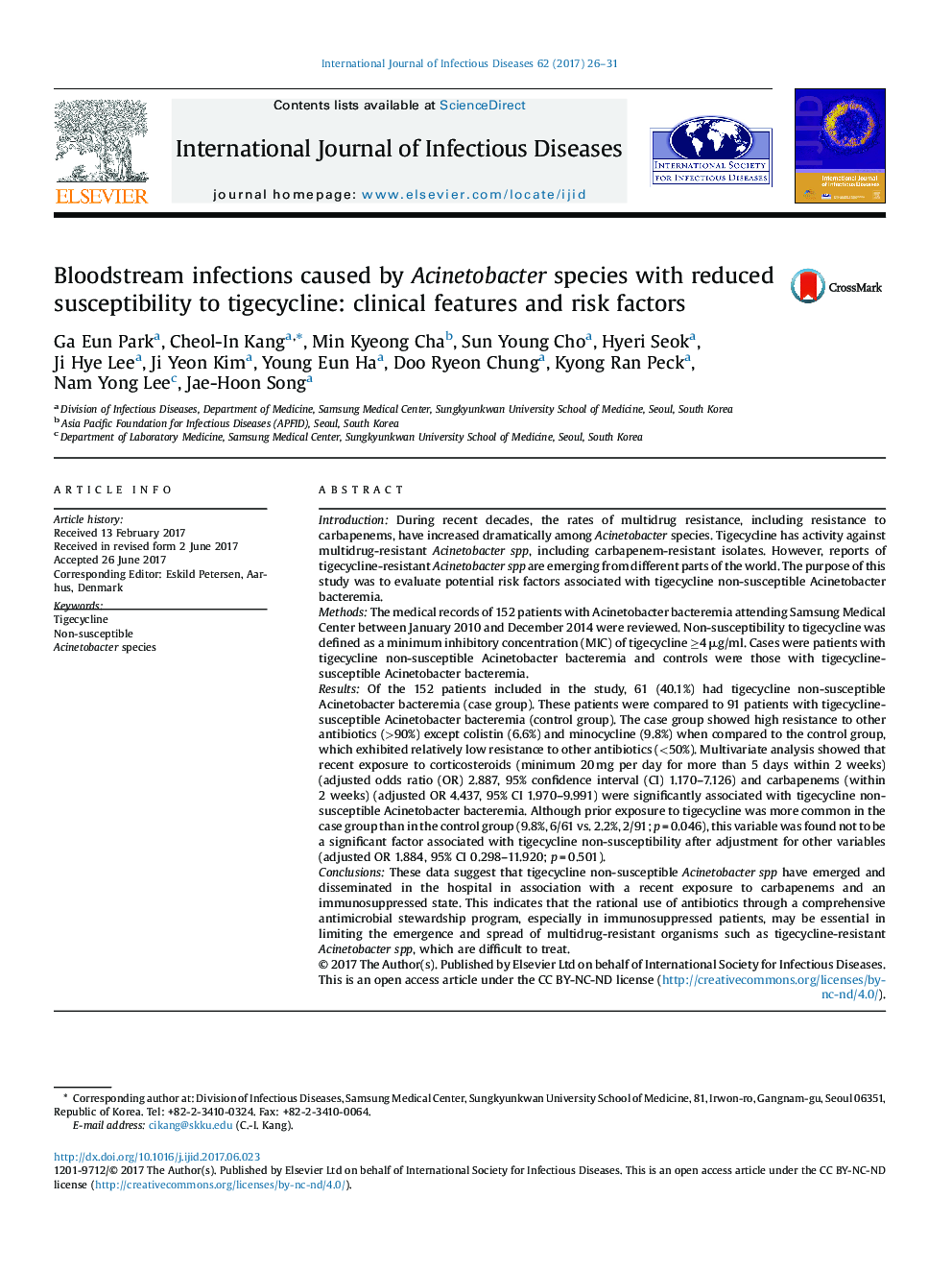| Article ID | Journal | Published Year | Pages | File Type |
|---|---|---|---|---|
| 5667174 | International Journal of Infectious Diseases | 2017 | 6 Pages |
IntroductionDuring recent decades, the rates of multidrug resistance, including resistance to carbapenems, have increased dramatically among Acinetobacter species. Tigecycline has activity against multidrug-resistant Acinetobacter spp, including carbapenem-resistant isolates. However, reports of tigecycline-resistant Acinetobacter spp are emerging from different parts of the world. The purpose of this study was to evaluate potential risk factors associated with tigecycline non-susceptible Acinetobacter bacteremia.MethodsThe medical records of 152 patients with Acinetobacter bacteremia attending Samsung Medical Center between January 2010 and December 2014 were reviewed. Non-susceptibility to tigecycline was defined as a minimum inhibitory concentration (MIC) of tigecycline â¥4 μg/ml. Cases were patients with tigecycline non-susceptible Acinetobacter bacteremia and controls were those with tigecycline-susceptible Acinetobacter bacteremia.ResultsOf the 152 patients included in the study, 61 (40.1%) had tigecycline non-susceptible Acinetobacter bacteremia (case group). These patients were compared to 91 patients with tigecycline-susceptible Acinetobacter bacteremia (control group). The case group showed high resistance to other antibiotics (>90%) except colistin (6.6%) and minocycline (9.8%) when compared to the control group, which exhibited relatively low resistance to other antibiotics (<50%). Multivariate analysis showed that recent exposure to corticosteroids (minimum 20 mg per day for more than 5 days within 2 weeks) (adjusted odds ratio (OR) 2.887, 95% confidence interval (CI) 1.170-7.126) and carbapenems (within 2 weeks) (adjusted OR 4.437, 95% CI 1.970-9.991) were significantly associated with tigecycline non-susceptible Acinetobacter bacteremia. Although prior exposure to tigecycline was more common in the case group than in the control group (9.8%, 6/61 vs. 2.2%, 2/91; p = 0.046), this variable was found not to be a significant factor associated with tigecycline non-susceptibility after adjustment for other variables (adjusted OR 1.884, 95% CI 0.298-11.920; p = 0.501).ConclusionsThese data suggest that tigecycline non-susceptible Acinetobacter spp have emerged and disseminated in the hospital in association with a recent exposure to carbapenems and an immunosuppressed state. This indicates that the rational use of antibiotics through a comprehensive antimicrobial stewardship program, especially in immunosuppressed patients, may be essential in limiting the emergence and spread of multidrug-resistant organisms such as tigecycline-resistant Acinetobacter spp, which are difficult to treat.
